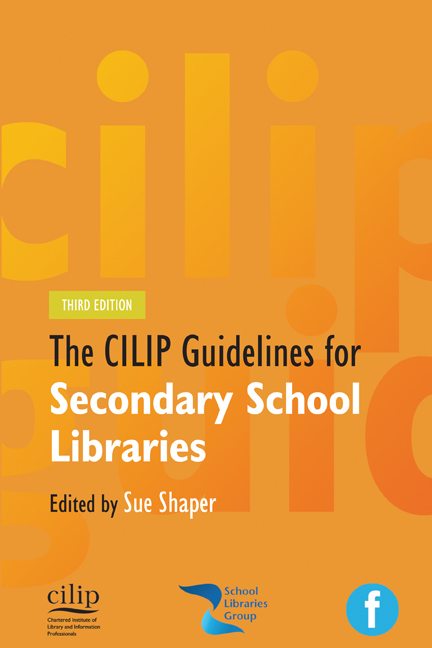Book contents
- Frontmatter
- Contents
- Foreword
- Key recommendations
- Introduction
- Notes
- Abbreviations
- 1 The school librarian and learning: CILIP's vision
- 2 Staffing and management
- 3 Policies and planning
- 4 The library environment
- 5 Management of learning resources
- 6 Information literacy
- 7 Developing students as readers
- 8 Marketing, promotion and advocacy
- 9 Evaluation
- 10 Partnerships
- References
- Appendices
- Index
5 - Management of learning resources
Published online by Cambridge University Press: 08 June 2018
- Frontmatter
- Contents
- Foreword
- Key recommendations
- Introduction
- Notes
- Abbreviations
- 1 The school librarian and learning: CILIP's vision
- 2 Staffing and management
- 3 Policies and planning
- 4 The library environment
- 5 Management of learning resources
- 6 Information literacy
- 7 Developing students as readers
- 8 Marketing, promotion and advocacy
- 9 Evaluation
- 10 Partnerships
- References
- Appendices
- Index
Summary
CILIP recommends that the school supports the vital role that sufficient quality resources play in stimulating learning and maximizes the impact of this investment by managing resources centrally. This means that:
• all members of the school community have equal access to the library services
• resources are recorded centrally
• the stock selection policy aims to provide for the needs of all users
• funding is sufficient to provide enough up-to-date and relevant resources to meet users’ needs.
Introduction
The complexity of managing learning resources has grown considerably in the last few years with the expansion of electronic information and eresources available to schools. This chapter offers guidance on managing this growth by examining the issues of:
• needs assessment
• budgeting
• selection
• location
• organization and access.
The current context for managing learning resources is characterized by:
• an emphasis on independent learning
• the recognition of the importance of independent reading in the development of literacy
• the unique contribution to reader development made by the library
• the key importance of information literacy
• the use of ICT as a tool for teaching and learning
• the importance of elearning and the development of intranets, websites and virtual learning environments (VLEs)
• the growing availability of mobile devices as a point of access to information
• an awareness of social inequalities in access to highquality information
• an increased understanding of how the brain works – the physiology of learning.
Students should enjoy using the library's resources. They need to see their own interests and cultures reflected and validated by inclusion in the school library. The best resources collections will inspire an enthusiasm to learn, stimulate curiosity and suit a variety of learning styles. This means that the secondary school library must contain a full range of imaginative fiction, from picture books to teen fiction to adult novels, and the widest possible nonfiction range. It needs to include representations of different life styles, cultures (including youth culture) and faiths. Resources need to relate directly to curriculum needs to support and sustain students’ achievement and provision should also be made for quality resources supporting students wider interests. Access to electronic resources needs to be integrated with books, recordings and resources provided in other media.
- Type
- Chapter
- Information
- CILIP Guidelines for Secondary School Libraries , pp. 35 - 44Publisher: FacetPrint publication year: 2014



